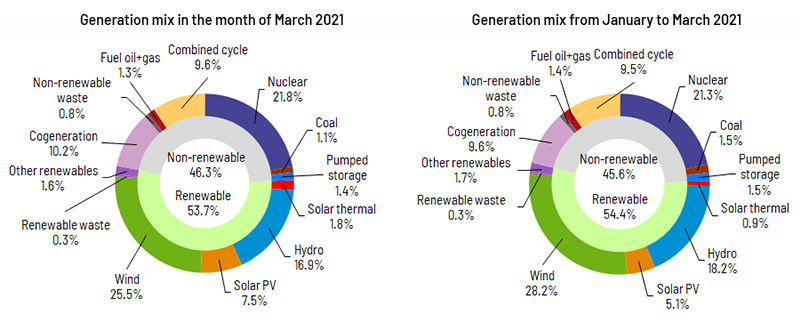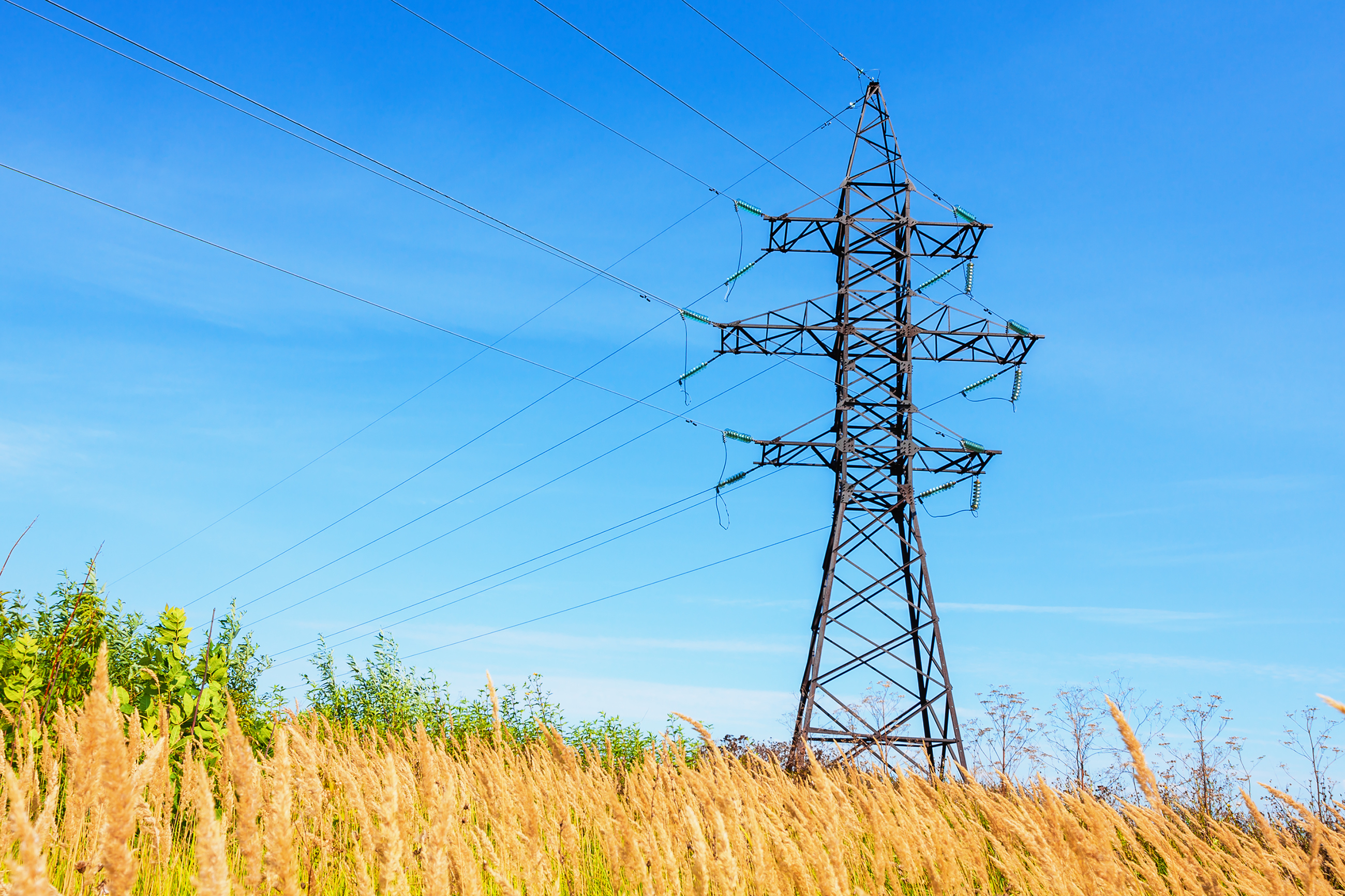For 40 years, we've been driving our country's economic and social progress. Four decades shaping Spain.
Demand for electricity in Spain increases 4.8% in March
- 53.7% of monthly generation came from renewable sources and 76.9% was produced from technologies that do not emit CO2 emissions.
- Wind power, responsible for 25.5% of the electricity produced in March, continues to be the leading technology in the national generation mix for the fourth consecutive month.
- Demand for electricity in the Balearic Islands grew by 1.4% and fell by 4.4% in the Canary Islands compared to March 2020.
National electricity demand in March is estimated at 21,930 GWh, a value that is 4.8% higher than in the same month last year, the month in which the state of emergency due to the Coronavirus pandemic was declared. After having factored in the influence of seasonal and working patterns, the figure is 3.8% higher than in March 2020.

Compared to a pre-pandemic period (March 2019) and after having factored in the influence of seasonal and working patterns, national electricity demand has fallen by 2.7%.
In the first three months of 2021, demand is estimated at 65,951 GWh, a value that is 0.3% higher than in 2020. Once again, having factored in the influence of seasonal and working patterns, demand is 0.6% lower than that registered in the same month last year.
In March, and according to data estimated at the time of this press release, generation coming from renewable energy sources represented 53.7% of the total production nationwide, registering a value that is 14.2% higher than in March 2020.
With the information available at the time of this press release, wind energy generation in March reached 5,661 GWh, a figure that is 1.1% higher than in the same period last year, and accounted for 25.5% of production nationwide, making it the leading technology in the national generation mix, ahead of nuclear (21.8%) and hydro (16.9%).
During this month, solar photovoltaic generated 1,665 GWh (7.5% of the total mix) and solar thermal 397 GWh (1.8%), values that are 56.1% and 68.3% higher, respectively, than in the same month of the previous year. As a result, 76.9% of electricity production in March came from technologies that do not emit GHG emissions.

Demand for electrical energy in the peninsular electricity system grows 5.2%
Demand for electrical energy in the peninsular electricity system in March is estimated at 20,835 GWh, a value that is an increase of 5.2% on that recorded in March 2020. After having factored in the influence of seasonal and working patterns, the demand for electricity is 4.2% up on that registered in the same month last year.
Compared to a period prior to the pandemic (March 2019) and after having factored in the influence of seasonal and working patterns, the demand for electricity on the Spanish mainland fell by 2.3%.
In the first quarter of 2021, the demand for electricity on the Spanish Peninsula is estimated at 62,733 GWh, a figure that is 0.8% higher than in 2020. In this case, after having factored in the influence of seasonal and working patterns, demand is 0.2% lower than that recorded in the same period of the previous year.
During this month, and according to data estimated at the time of this press release, 55.5% of peninsular generation came from renewable energy sources and 79.9% was obtained using technologies which produce zero CO2 emissions. For its part, wind energy stood at 5,572 GWh, 1.2% higher than in March last year, and became the leading technology by contributing 26.3% to the overall generation mix.
Demand for electricity in March increased 1.4% in the Balearic Islands and fell 4.4% in the Canary Islands
In the Balearic Islands, the demand for electricity in March is estimated at 409,525 MWh, a value that is 1.4% higher than that recorded in March 2020. After factoring in the influence of seasonal and working patterns, the figure remains the same as in March 2020.
Compared to a period prior to the pandemic (March 2019) and after having factored in the influence of seasonal and working patterns, the demand for electricity in the Balearic Islands fell by 7.6%.
In the three months of 2021, electricity demand in the Balearic Islands is estimated at 1,241,942 MWh, 1.7% less than in the same period in 2020.
Combined cycle, with 78.6% of the total production in the Balearic Islands, was the leading source of electricity generation in March, a month in which renewable technologies and those which produce zero CO2 emissions accounted for 7.6% of the total generation mix in the archipelago. Furthermore, energy transferred via the Spanish Peninsula-Balearic Islands submarine link contributed to covering 31.3% of the electricity demand in the Balearic Islands.
Regarding the Canary Islands, electricity demand is estimated at 652,120 MWh, 4.4% less than that recorded in March last year. After factoring in the influence of seasonal and working patterns, the figure stands at a value that is 4.8% lower than in the same month last year.
Compared to a period prior to the pandemic (March 2019) and after factoring in the influence of seasonal and working patterns, the demand for electricity in the Canary Islands fell by 12.4%.
In the first quarter of 2021, electricity demand in the Canary Islands is estimated at 1,875,132 MWh, 12.6% less than in the same period in 2020.
In March, combined cycle was also the leading technology in the Canary Islands’ generation mix with a contribution of 45.4%. Renewable technologies and those which produce zero CO2 emissions represented 17.6% of the total generation on the Canary Islands.
Consult our Daily Balance Report for more information on the National, Peninsular, Balearic Islands and Canary Islands electricity systems as at the close of March.












